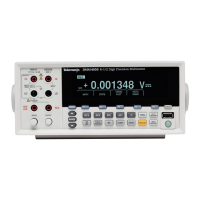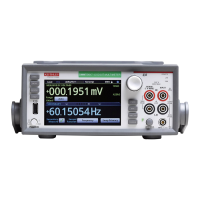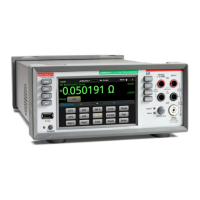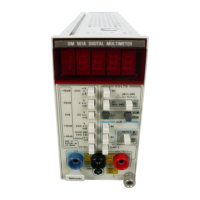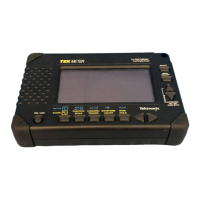DMM4040 and DMM4050
Users Manual
2
—I—
Input Impedance, Automatic, 3-10
Inspecting Meter, 2-3
—K—
Keys
Range, 3-8
Soft, 3-4
Soft, labels for, 3-6
—L—
Limits Testing
setting of limits, 3-12
Using, 3-12
Line Voltage Selection, 2-3
—M—
Math functions
Limits testing, 3-12
MX+B, 3-13
Offset, 3-13
Math Operations, 3-11
Measurement Complete
Monitoring of, 4-20
Understanding of, 3-18
Measurements
AC current, 4-13
AC Voltage, 4-6
Capacitance, 4-14
Current, 4-10
DC current, 4-12
DC Voltage, 4-4
Frequency, 4-7
Period, 4-7
Resistance, 4-8
2-wire, 4-8
4-wire, 4-9
Temperature, 4-15
Voltage, 4-4
Memory
Configuration
Recall, 3-23
Storing, 3-21
management of, 3-23
Reading recall, 3-20
Reading storage, 3-19
Memory, Access to, 3-18
Meter errors
Reading, 3-24
MX+B function, 3-13
—O—
Offset, setting of, 3-13
Options and Accessories, 1-14
—P—
Period measurements, 4-7
Product Description, 1-11
—R—
Range Key, 3-8
Readings
recalling, 3-20
storing, 3-19
Rear panel, 3-7
Recalling configurations, 3-23
Recalling readings, 3-20
Resistance measurements
2-wire, 4-8
4-wire, 4-9
Resistance Measurements, 4-8
RTD Temperature measurements, 4-15
—S—
Secondary display
activation of, 4-3
Shipping Meter, 2-3
Specifications, 1-15
Statistics
taking of, 3-11
Storing configurations, 3-21
Storing Meter, 2-3
Storing readings, 3-19
—T—
Temperature
setting default scale, 3-10
Temperature measurements, 4-15
Time, setting of, 3-25
TrendPlot, 3-14
Trigger functions, 3-16
Trigger sources, 3-17
Triggering
Auto, 3-17
Choosing a source, 3-17
External, 3-17
I/O jack, 4-19
setting a delay, 4-19
Setting a delay, 3-18
Setting number of samples, 3-18
Setting the mode, 4-18
Triggered Measurement, 4-18
Turning power on, 2-7
—U—
Unpacking Meter, 2-3
—V—
Voltage
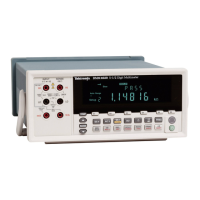
